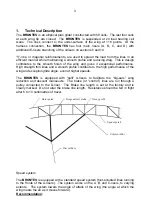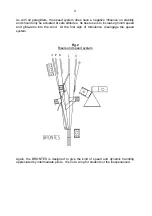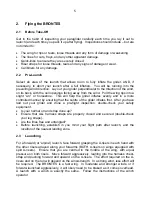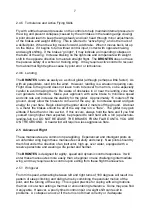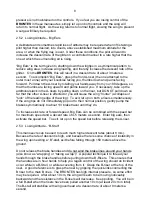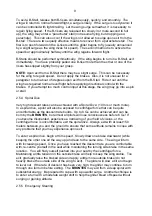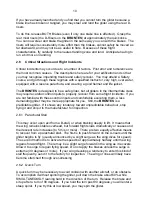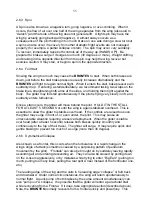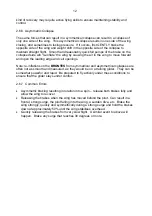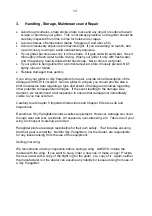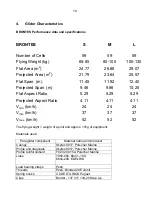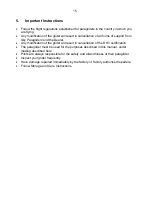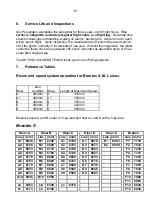
6
2.4 Flight
2.4.1 Circling and turning
The
BRONTES
is an agile glider. It is easy to enter a turn by leaning in the direction
of the turn, and applying more brake in the same direction. As with all aircraft, the sink
rate will increase in a turn and increases more with steeper turns. Turns can be made
throughout the normal speed range (speeds without the speed system engaged).
However, turning at very low speed can lead to a “stall”, while high speed turns can
lead to a spiral dive. When the speed system is in use, turns should only be minor
course adjustments accomplished with very small movements of the brakes or, a
gentle lean in the turn direction.
2.4.2 Gaining Altitude
All Gliders fall, all of the time. The secret to climbing is to fly in air that is rising faster
than the glider is falling. Generally, there are two types of rising air: Thermals, and
ridge lift. Rising air is almost always accompanied by turbulence: what goes up must
also come down. A
BRONTES
pilot should have already gained some experience in
thermals and ridge-lift on other wings. Take care to familiarise yourself with the
BRONTES
in light conditions – especially if this is your first higher performance glider.
2.4.3 Flying in Thermals
The
BRONTES
has a low sink rate and is an agile glider. It is an excellent wing for
thermal flight. The prevalent technique it to begin to turn in circles when encountering
thermals. In light thermals, a gentle turn is appropriate to minimise the glider’s sink
rate. Slowing the glider and braking a little more in the direction of turn accompanied
by a slight lean in the same direction will induce a turn that minimises glider sink.
Take care to avoid spinning the glider while thermalling slowly. Be prepared to allow
the glider to accelerate by raising the braked at the first sign of a spin or before the
onset of a stall. In stronger thermals, braking at higher speed will help centre the
glider in the thermal and maintain more stability for dealing with turbulence. In thermal
conditions, rapidly falling air can be found near the boundary of the rising air, or
anywhere. These conditions can result in some deflations of the wing, and require
some piloting skill to maintain control. Exercise extreme caution.
2.4.4 Ridge Lift
Ridge lift is the term given to lift generated by wind deflecting upward from features
such as slopes, cliffs, mountains or ridges. The lift can be very smooth and,
depending on the wind speed and the size of the feature, extend to surprisingly high
altitudes. Ridge lift is generally associated with turbulence either “down wind” (also
called “lea” or “lea-side”) from the lift band, or at the “edges”, where valleys, canyons
or other gaps in the lift generating feature occur. Because of the wind speeds (30
km/h is common for skilled pilots) trouble in these areas of turbulence can be sudden
and violent. Dangers include being blown back into the lea-side rotor (a term used to
describe the kind of rotary turbulence occasioned by obstacles) and crashed into the
ground, since ridge flying frequently occurs low to the ground.
Содержание BRONTES
Страница 18: ...18 ...



